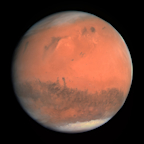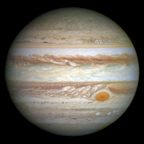Shop for the Latest Styles. Next Day Delivery Available. Over 16,000 products from top brands: running shoes, running clothing, outdoor gear & more
- The Running Store
Running shoes, jackets or spikes.
Find the right running kit here.
- The Gym Store
Gym shoes and clothing for Weights,
Functional Fitness and more
- The Trail Store
Trail running shoes, and clothing.
Find the perfect trail kit here.
- Our Mens range
Men's running shoes, trainers
& sports clothes
- Our Womens Range
Women's running shoes, trainers
& sports clothes
- Our Kids Range
We stock a wide range of products
for kids, from clothes to shoes.
- The Running Store
Search results
Venus is the second planet from the Sun. It is a terrestrial planet and is the closest in mass and size to its orbital neighbour Earth. Venus is notable for having the densest atmosphere of the terrestrial planets, composed mostly of carbon dioxide with a thick, global sulfuric acid cloud cover.
- 35.02 km/s
- −243.0226 d (retrograde)
- 6.52 km/h (1.81 m/s)
Learn about Venus, the second planet from the Sun and the hottest in our solar system. Find out how it compares to Earth, why it is uninhabitable, and what missions have studied it.
- Overview
- Basic astronomical data
Venus and Earth share similarities in their masses, sizes, densities, and relative locations in the solar system. Since they were presumably formed in the solar nebula from the same kind of rocky planetary building blocks, they also likely have similar overall chemical compositions. For these similarities, Venus has been called Earth's twin.
How far is Venus from the Sun?
Venus orbits the Sun at a mean distance of 108 million km (67 million miles), which is about 0.7 times Earth's distance from the Sun.
How does Venus look like?
When viewed through a telescope, Venus presents a brilliant yellow-white and a featureless face to the observer. Its obscured appearance results from the surface being hidden from sight by a continuous and permanent cover of clouds that are difficult to view in visible light.
How big is Venus?
Viewed through a telescope, Venus presents a brilliant yellow-white, essentially featureless face to the observer. Its obscured appearance results from the surface of the planet being hidden from sight by a continuous and permanent cover of clouds. Features in the clouds are difficult to see in visible light. When observed at ultraviolet wavelengths, the clouds exhibit distinctive dark markings, with complex swirling patterns near the equator and global-scale bright and dark bands that are V-shaped and open toward the west. Because of the all-enveloping clouds, little was known about Venus’s surface, atmosphere, and evolution before the early 1960s, when the first radar observations were undertaken and spacecraft made the first flybys of the planet.
Venus orbits the Sun at a mean distance of 108 million km (67 million miles), which is about 0.7 times Earth’s distance from the Sun. It has the least eccentric orbit of any planet, with a deviation from a perfect circle of only about 1 part in 150. Consequently, its distances at perihelion and aphelion (i.e., when it is nearest and farthest from the Sun, respectively) vary little from the mean distance. The period of its orbit—that is, the length of the Venusian year—is 224.7 Earth days. As Venus and Earth revolve around the Sun, the distance between them varies from a minimum of about 42 million km (26 million miles) to a maximum of about 257 million km (160 million miles).
Special offer for students! Check out our special academic rate and excel this spring semester!
Learn More
Because Venus’s orbit lies within Earth’s, the planet exhibits phases like those of the Moon when viewed from Earth. In fact, the discovery of these phases by the Italian scientist Galileo in 1610 was one of the most important in the history of astronomy. In Galileo’s day the prevailing model of the universe was based on the assertion by the Greek astronomer Ptolemy almost 15 centuries earlier that all celestial objects revolve around Earth (see Ptolemaic system). Observation of the phases of Venus was inconsistent with this view but was consistent with the Polish astronomer Nicolaus Copernicus’s idea that the solar system is centred on the Sun. Galileo’s observation of the phases of Venus provided the first direct observational evidence for Copernican theory.
The rotation of Venus on its axis is unusual in both its direction and its speed. The Sun and most of the planets in the solar system rotate in a counterclockwise direction when viewed from above their north poles; this direction is called direct, or prograde. Venus, however, rotates in the opposite, or retrograde, direction. Were it not for the planet’s clouds, an observer on Venus’s surface would see the Sun rise in the west and set in the east. Venus spins very slowly, taking about 243 Earth days to complete one rotation with respect to the stars—the length of its sidereal day. Venus’s spin and orbital periods are very nearly synchronized with Earth’s orbit such that, when the two planets are at their closest, Venus presents almost the same face toward Earth. The reasons for this are complex and have to do with the gravitational interactions of Venus, Earth, and the Sun, as well as the effects of Venus’s massive rotating atmosphere. Because Venus’s spin axis is tilted only about 3° toward the plane of its orbit, the planet does not have appreciable seasons. Also, Venus’s rotational period slowed by 6.5 minutes between two sets of measurements taken in 1990–92 and 2006–08. Astronomers as yet have no satisfactory explanation for Venus’s peculiar rotational characteristics. The idea cited most often is that, when Venus was forming from the accretion of planetary building blocks (planetesimals), one of the largest of these bodies collided with the proto-Venus in such a way as to tip it over and possibly slow its spin as well.
Learn about Venus, the second planet from the Sun and the second largest terrestrial planet. Find out about its surface temperature, atmosphere, rotation, history, and more.
Venus is the second planet from the Sun, and Earth's closest planetary neighbor. Venus is the third brightest object in the sky after the Sun and Moon. Venus spins slowly in the opposite direction from most planets. Venus is similar in structure and size to Earth, and is sometimes called Earth's evil twin.
May 6, 2024 · Learn about Venus, the hottest planet in our solar system, with a thick atmosphere and clouds of sulfuric acid. Find out how Venus spins, rotates, and orbits the Sun, and see images of its surface and volcanoes.
Feb 26, 2024 · Length of year: 225 Earth days. Distance from sun: 67 million miles (108 million kilometers) Number of moons: 0. Surface temperature: 900° F (480° C) Diameter: 7,520 miles (12,100 km) Atmospheric...
Looking for Venus Plant? Find it all on eBay with Fast and Free Shipping. We've got your back with eBay money-back guarantee. Enjoy Venus Plant you can trust.
Navigation Links:




















